YOU ARE LEARNING:
Food Chains
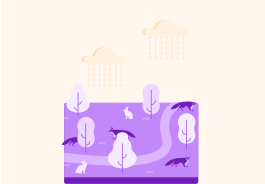
Food Chains
Food chains show the transfer of energy, which happens when one organism becomes food for another. All food chains begin with organisms that photosynthesise.
All energy from life on Earth originates from just one enormous source. Which one?

So there are organisms on Earth that can take sunlight and essentially turn it into food. Which organisms are those?

So plants can turn sunlight into food or energy stores. What do we call that process?

To recap! All energy on Earth originates from the Sun
Without the Sun there would be no energy (no food) on Earth!
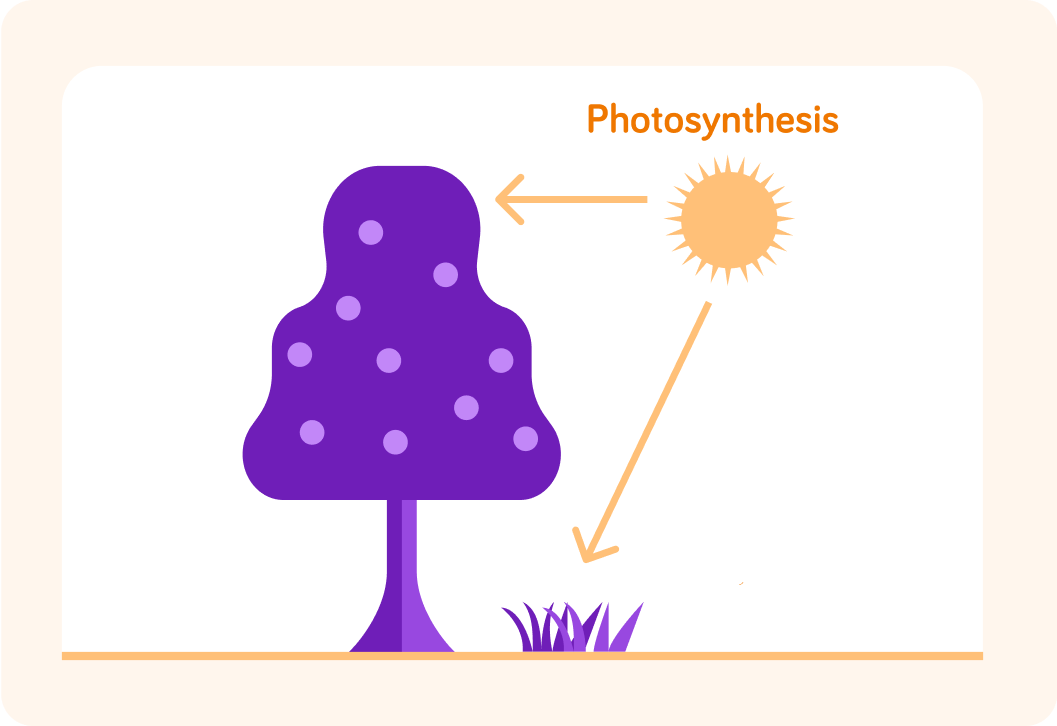
Plants take sunlight and turn it into energy (food)
We call that photosynthesis.

Photosynthesis
Plants take sunlight, carbon dioxide and water and turn it into oxygen and glucose.

Plants use the glucose to grow
When plants grow, that produces more biomass. That means there is more energy (food) for plant eaters to consume.

So when plants grow, that produces more biomass. What do you think biomass really means?

This is a food chain
It shows how biomass is transferred from one level of the food chain to the next.
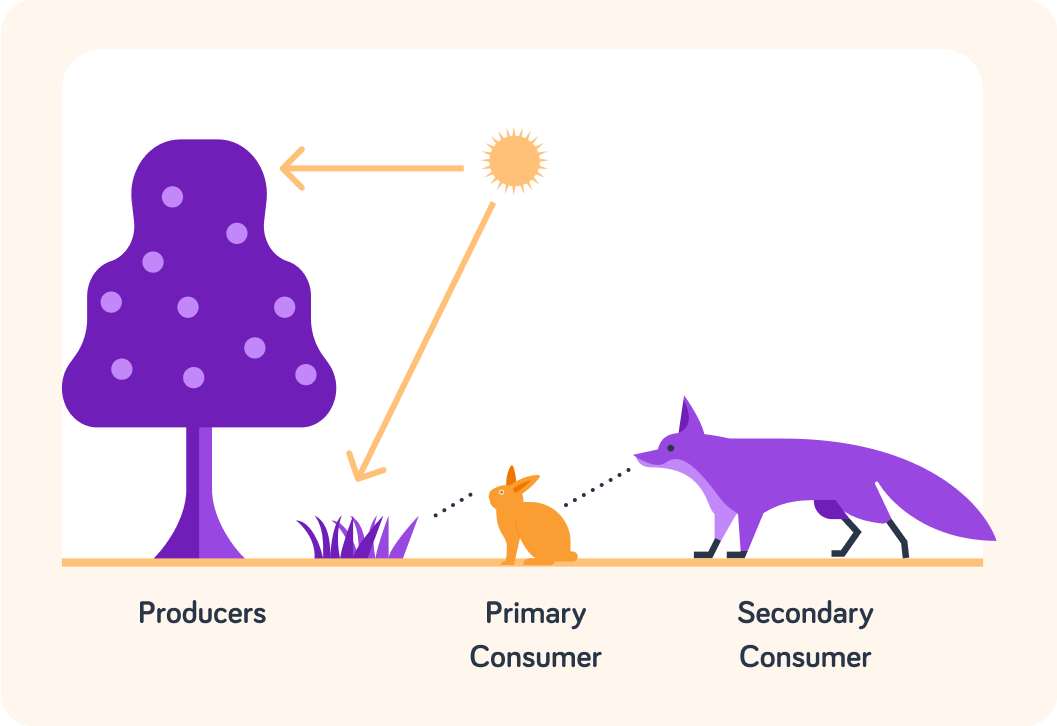
Plants can produce biomass via photosynthesis. What are plants called in a food chain?


Now, rabbits consume plants, for example grass. What are they called in this food chain?


Foxes eat other animals that have already taken their food from plants. What are foxes called in a food chain?


The next level would be called the tertiary consumers
Most food chains only have up to tertiary consumers, because the amount of biomass reduces for every level. For example, there is a lot less rabbit mass for foxes to eat than there is grass mass for rabbits to eat.

What do we also call secondary consumers, for example foxes?

What do we also call primary consumers, for example rabbits?

This rabbit weighs 1,000 g. After it has eaten 1,000 g of grass, it weighs 1,100 g. How much of the grass' biomass got transferred to the rabbit? Give your answer as a percentage.

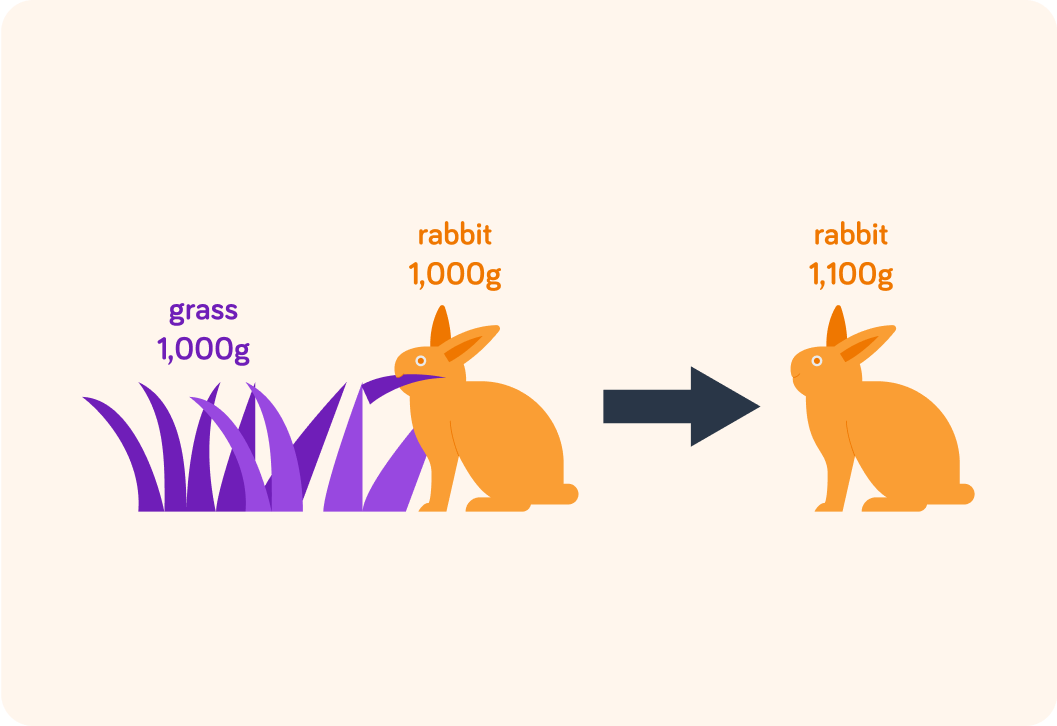
This fox weighs 5,000 g. After it has eaten the rabbit, it weighs 5,110 g. How much of the rabbit's biomass got transferred to the fox? Give your answer as a percentage.

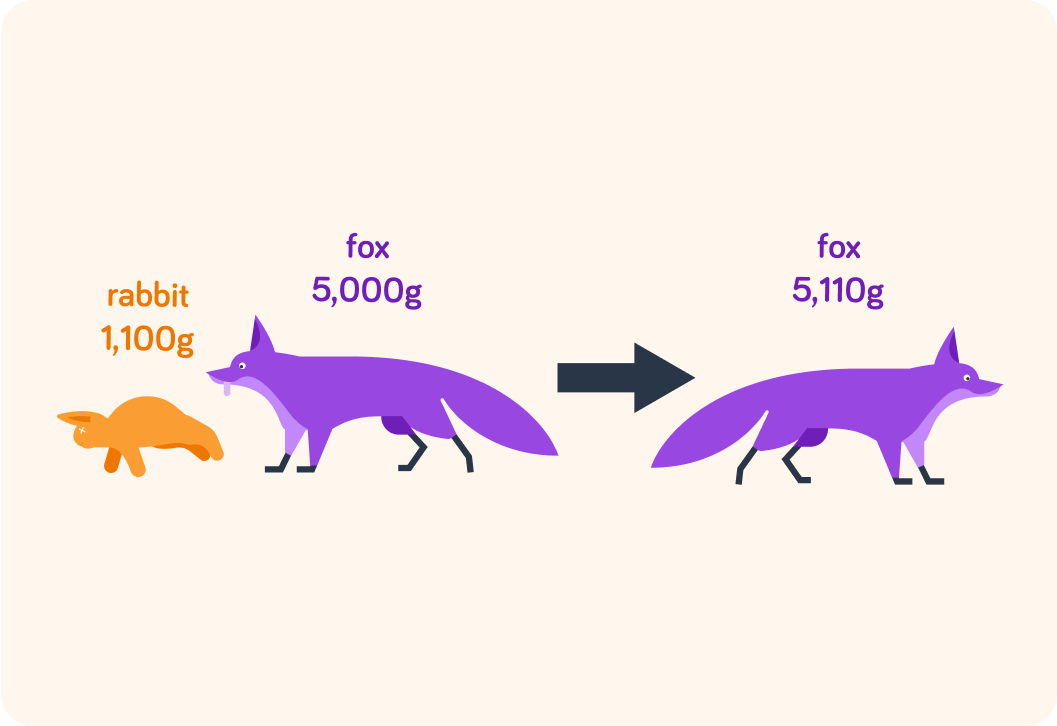
So for every level up in the food chain, only about 10% of biomass gets transferred. How much does that mean is lost from the food chain in % between every step?


This graph shows the population of foxes and rabbits over time
The populations fluctuate in relation to each other.
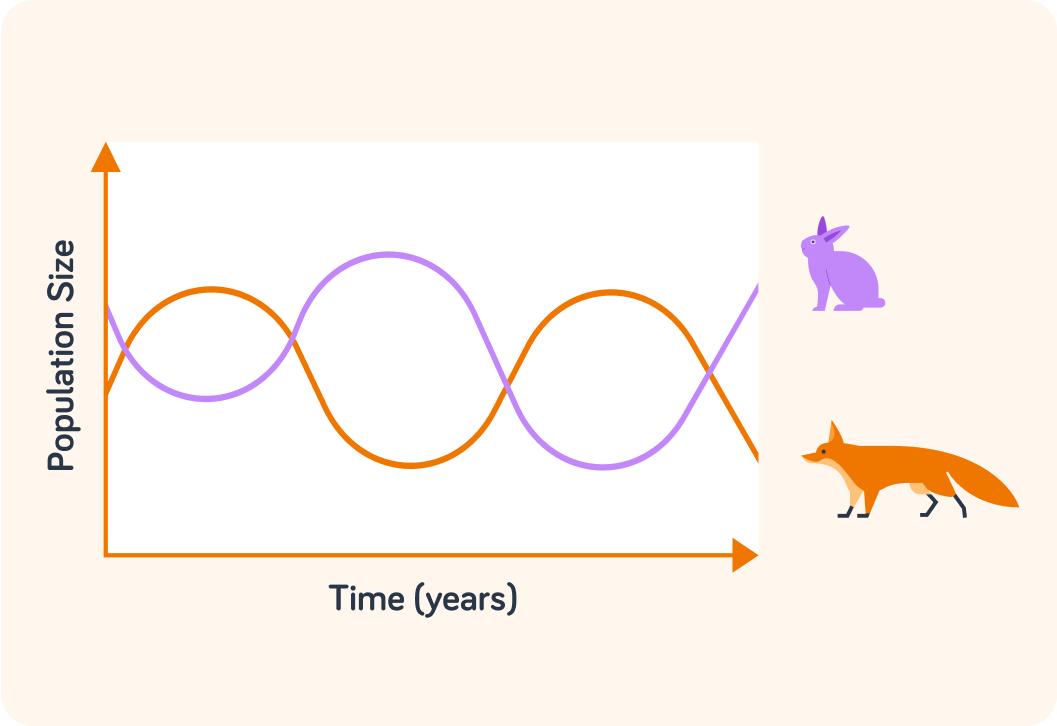
If there are few foxes, there are _________ rabbits.
A) also few B) lots of


When the fox population is high and the rabbit population is low, the fox population starts to ___________.
A) go down B) go up


When the rabbit population is lower, there is less food for the foxes, so the fox population ____________.
A) decreases B) increases


On the other hand, when the fox population is down, the rabbit population has fewer predators, so it can __________.
A) decrease B) increase


When the rabbit population increases that can again support more foxes
And so these two populations continue to balance each other out.

Summary! There are different levels in a food chain
Each level in the food chain lives off the level before it.

The first level are the producers
They are plants that can produce biomass form sunlight.

The second level are the primary consumers
They eat plants.

The third level are the secondary consumers
They are predators that eat primary consumers (their prey).

The fourth level is the tertiary consumers
Food chains don't normally have levels beyond tertiary consumers, because the amount of biomass that gets transferred from level to level very quickly reduces!

Only about 10% of biomass gets transferred from level to level in a food chain
That means that around 90% of biomass disappears out of the food chain.

